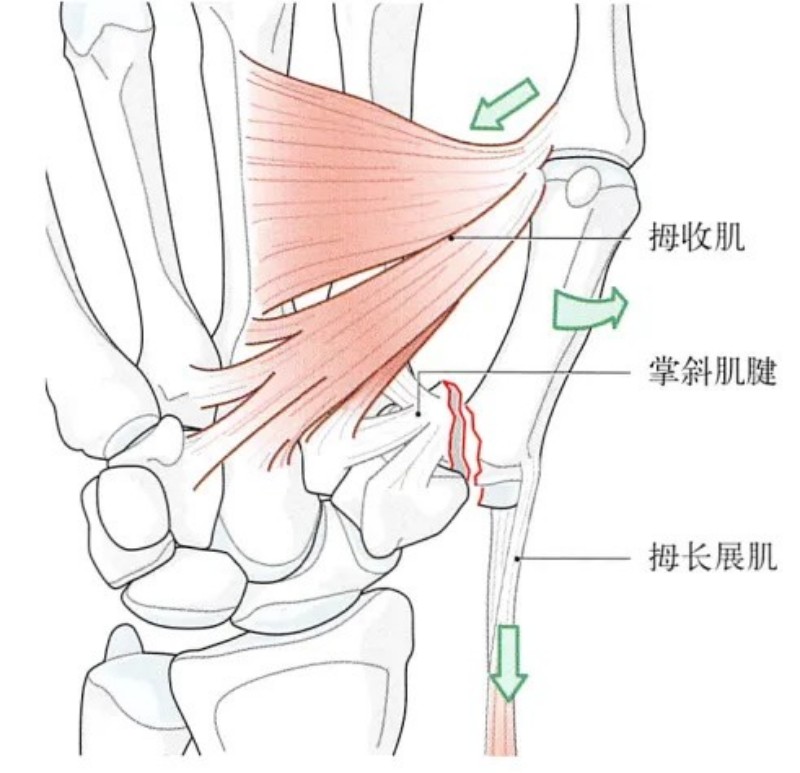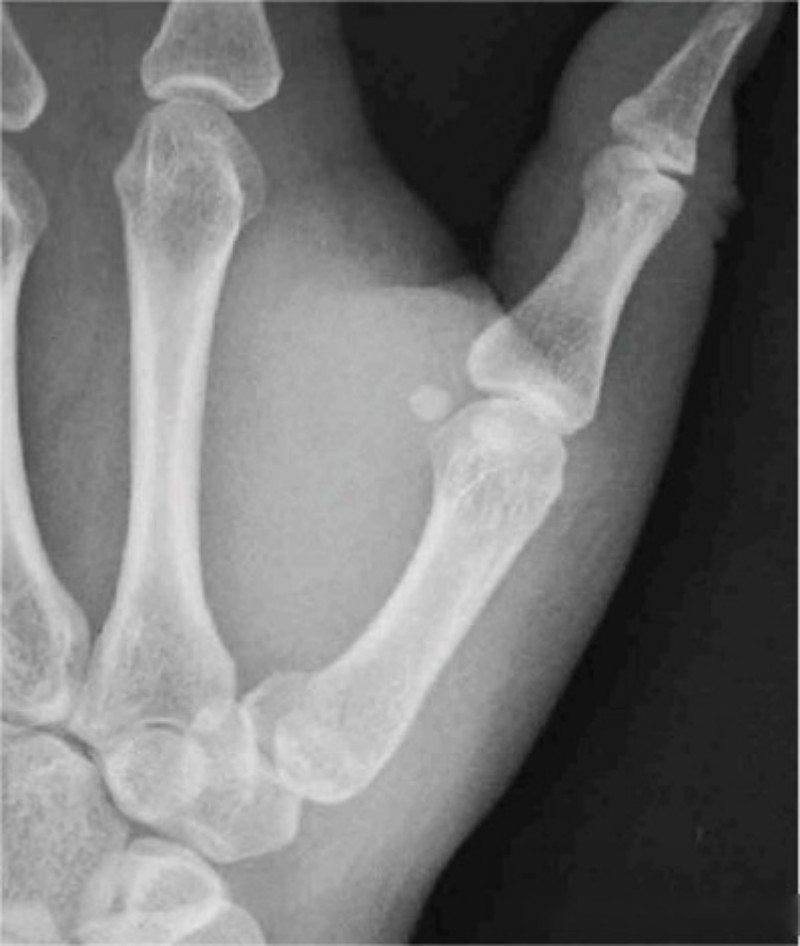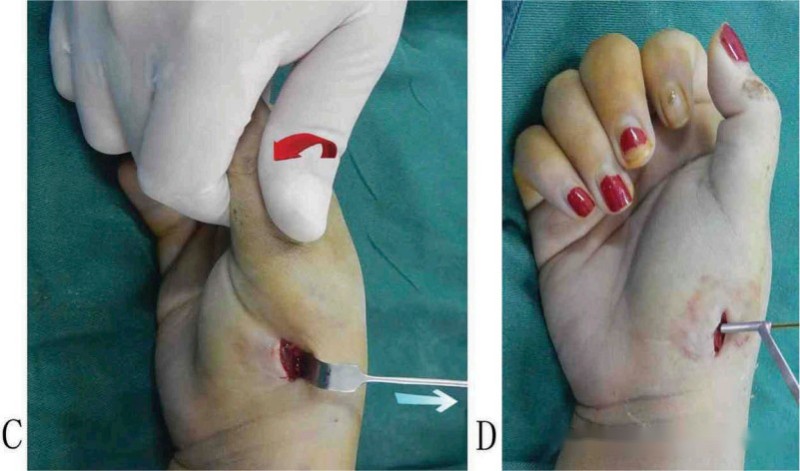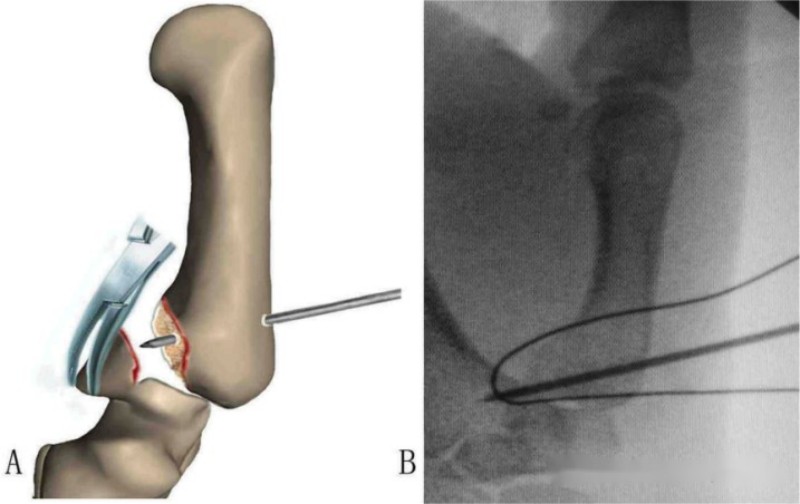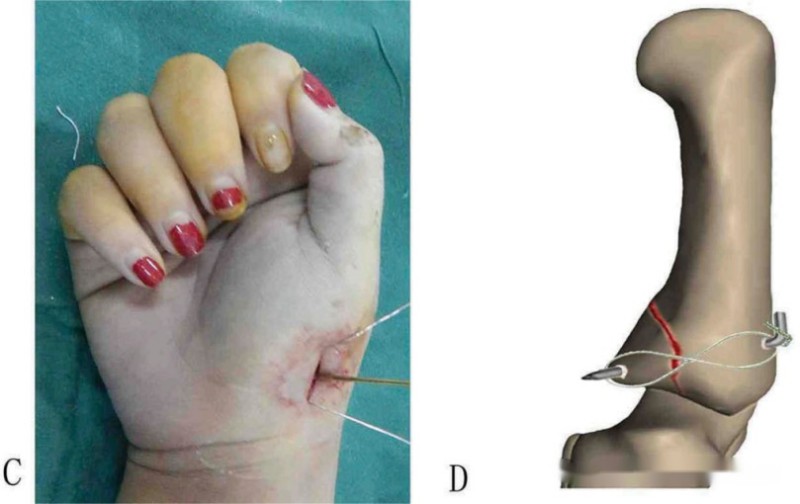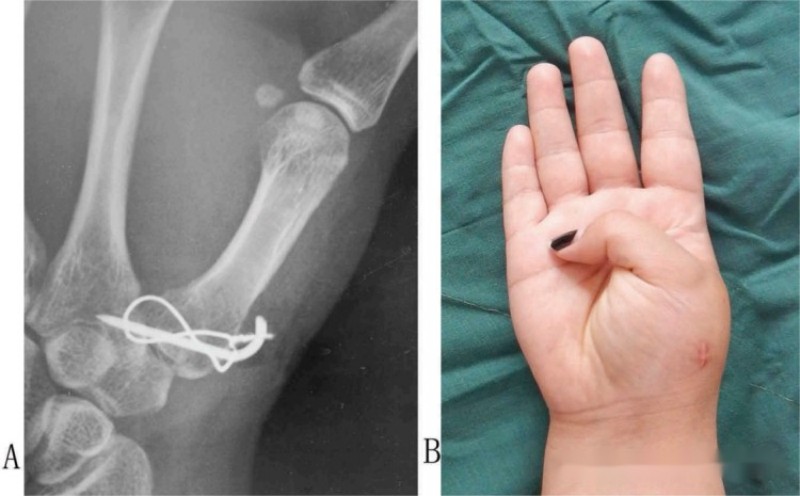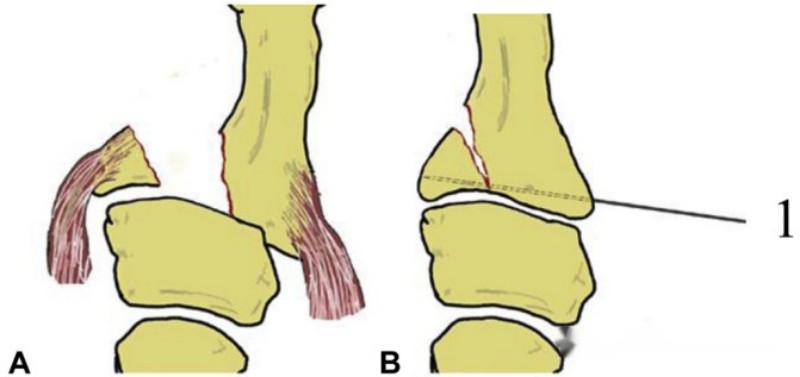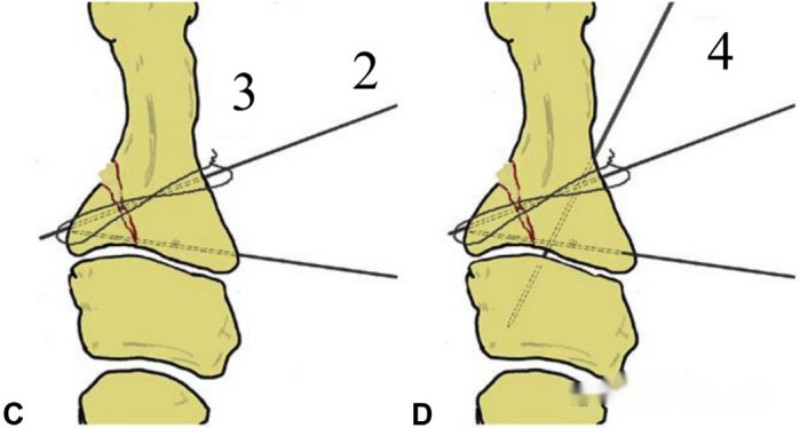Bennett’s fracture accounts for 1.4% of hand fractures. Unlike ordinary fractures of the base of the metacarpal bones, the displacement of a Bennett fracture is quite unique. The proximal articular surface fragment is maintained in its original anatomical position due to the pull of the oblique metacarpal ligament, while the distal fragment, due to the traction of the abductor pollicis longus and adductor pollicis tendons, dislocates dorsoradially and supinates.
For displaced Bennett’s fractures, surgical treatment is usually recommended to avoid impairing the alignment of the carpometacarpal joint and thumb function. In terms of surgical treatment methods, plate and screw fixation systems, as well as Kirschner wire internal fixation, are widely used in clinical practice. Scholars from the Third Hospital of Hebei have proposed a Kirschner wire tension band technique, which involves a minimally invasive small incision to fix Bennett’s fractures, achieving good outcomes.
Step 1: Make a 1.3 cm incision on the radial side of the carpometacarpal joint, dissect layer by layer to expose the area, retract the abductor pollicis longus towards the ulnar side, and expose the dorsal side of the carpometacarpal joint.
Step 2: Apply manual traction and pronate the thumb to reduce the fracture. Insert a 1 mm Kirschner wire through the distal fracture end, 1-1.5 cm away from the carpometacarpal joint, to fix the proximal bone fragment. After the Kirschner wire penetrates the bone fragment, continue advancing it by 1 cm.
Step 3: Take a wire and loop it in a figure-eight pattern around both ends of the Kirschner wire, then secure it in place.
The Kirschner wire tension band technique has been applied in many fractures, but for Bennett’s fractures, the small incision often results in poor visibility and makes the procedure challenging. Additionally, if the fracture is comminuted, a single Kirschner wire may not effectively stabilize the proximal bone fragment. Its clinical practicality may be limited. Besides the aforementioned tension band fixation method, there is also a Kirschner wire fixation combined with a tension band technique, which has also been reported in the literature.
Post time: Sep-24-2024





